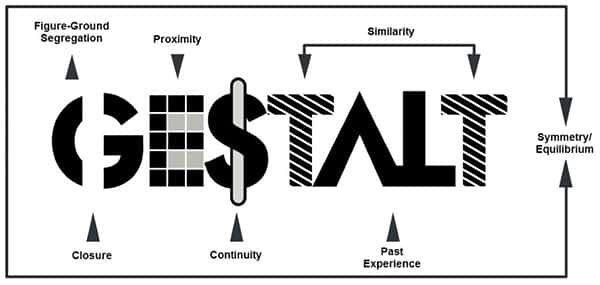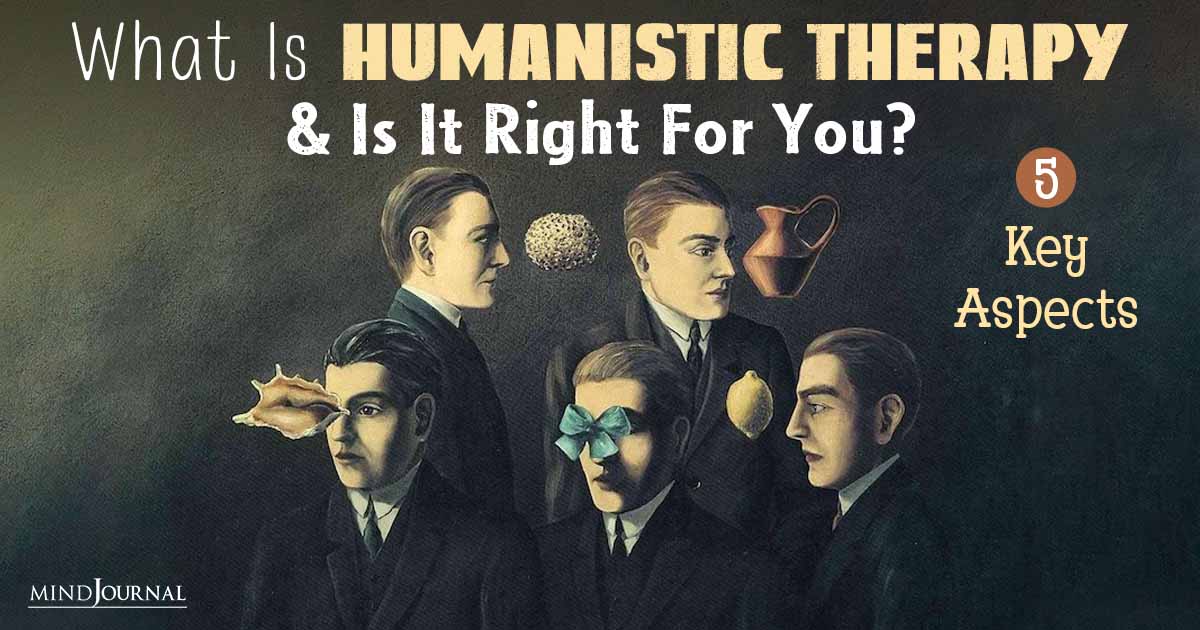Have you ever wondered what it truly means to be understood, accepted, and supported in your journey of self-discovery and personal growth? Humanistic therapy, rooted in the belief of each individual’s innate capacity for self-actualization and personal growth, encompasses various types and techniques. But what is humanistic therapy?
In a world that often focuses on diagnoses and symptoms, humanistic therapy offers a refreshing and empowering approach that places the individual at the center of the therapeutic process.
Let us delve into the fascinating realm of humanistic therapy, exploring examples of humanistic therapy, types of humanistic therapy, advantages of humanistic therapy and humanistic therapy techniques.
So let’s dive in and find out how this empowering therapeutic approach can support their journey towards self-discovery and personal development.
What is Humanistic Therapy?
Humanistic therapy, also known as humanistic psychology or person-centered therapy, is a therapeutic approach that emphasizes the inherent worth, dignity, and potential of each individual.
Developed in the mid-20th century by notable psychologists such as Carl Rogers and Abraham Maslow, humanistic therapy offers a departure from traditional therapeutic models by focusing on the person’s subjective experience, self-awareness, and personal growth.

At the core of humanistic therapy is the belief that individuals possess an innate drive towards self-actualization, a process of realizing their unique potential and living a fulfilling life.
Unlike other therapeutic approaches that tend to pathologize and diagnose, humanistic therapy places great importance on the individual’s capacity for self-understanding, self-direction, and self-healing.
Related: The Insider’s Guide To Talk Therapy: What You Need To Know To Get The Most Out Of Your Sessions
Examples of Humanistic Therapy
To better understand what is humanistic therapy, let’s consider the following examples of humanistic therapy – an individual’s unique experiences, self-actualization, and personal growth.
Case Study: John’s Journey to Self-Actualization
Client Background
John is a 30-year-old man who has been struggling with low self-esteem and a lack of direction in life. He feels lost, unmotivated, and disconnected from his true self. He often experiences anxiety and self-doubt, which have been affecting his relationships and overall well-being.
Therapeutic Approach
John seeks humanistic therapy to address his personal issues and explore his self-identity and potential. The therapist, using a humanistic approach, aims to create a supportive and non-judgmental environment to help John on his journey of self-discovery and self-actualization.
Assessment and Initial Goals
In the initial sessions, the therapist conducts a comprehensive assessment of John’s life experiences, past traumas, and current concerns. They work together to identify John’s goals for therapy, which include:
- Enhancing self-esteem and self-acceptance.
- Identifying and pursuing his passions and values.
- Reducing anxiety and self-doubt.
- Improving his interpersonal relationships.
Intervention and Progress
Over several months of therapy, the therapist utilizes various humanistic techniques to assist John in achieving his goals:
1. Unconditional Positive Regard: The therapist consistently shows empathy and unconditional positive regard, helping John feel accepted and valued.
2. Active Listening: The therapist actively listens to John’s concerns, allowing him to freely express his thoughts and emotions.
3. Self-Exploration: John is encouraged to explore his beliefs, values, and personal history to gain a better understanding of himself.
4. Self-Actualization: The therapist helps John set small, achievable goals and supports him in pursuing his passions and interests.
5. Expression of Emotions: John is encouraged to express his emotions in a healthy and non-repressive manner, facilitating emotional growth.
Outcome:
Through the course of therapy, John experiences significant personal growth and self-actualization. He becomes more self-aware, begins to pursue activities that align with his values and passions, and develops a healthier self-esteem.
His anxiety diminishes, and he forges stronger, more fulfilling relationships with others. By the end of therapy, John has a clearer sense of self and a renewed sense of purpose in his life.
The above examples of humanistic therapy demonstrate how humanistic therapy can empower individuals to explore their inner selves, develop a greater understanding of their values and goals, and ultimately, achieve personal growth and self-actualization.
Now that we know what is humanistic therapy, let’s explore some of the benefits and advantages of humanistic therapy.
Advantages of Humanistic Therapy
Humanistic Therapy can offer several benefits to anyone seeking to improve themselves and their life. Here are some of the most common advantages of humanistic therapy –
1. Focus on Self-Exploration and Self-Awareness
Humanistic therapy provides a unique opportunity for individuals to deepen their understanding of themselves. By creating a non-judgmental and supportive space, humanistic therapists encourage clients to explore their thoughts, emotions, and behaviors without fear of criticism or rejection.
This process of self-exploration can lead to greater self-awareness, insight, and personal growth.
2. Emphasis on Personal Agency and Empowerment
Humanistic therapy recognizes and honors the individual’s capacity for self-direction and personal growth. It fosters a sense of empowerment by encouraging clients to take an active role in their therapeutic journey.
Clients are seen as experts in their own lives, and their values, goals, and aspirations are respected and supported. This collaborative approach helps individuals develop a greater sense of agency, self-confidence, and autonomy.
Related: Why We Need To Be Curious About Mental Illness

3. Holistic Approach to Mental Health
Unlike approaches that solely focus on symptom reduction, humanistic therapy takes a holistic view of mental health. It considers the interconnectedness of the mind, body, and spirit, recognizing that mental and emotional well-being are influenced by various factors such as relationships, self-expression, and life experiences.
Humanistic therapy seeks to address the underlying causes of distress and promote overall well-being, rather than simply treating isolated symptoms.
4. Therapeutic Relationship as a Healing Tool
The therapeutic relationship plays a central role in humanistic therapy. The therapist’s genuine presence, empathy, and unconditional positive regard create a safe and supportive environment for clients to explore their inner world.
This therapeutic alliance fosters trust, authenticity, and vulnerability, which are essential for personal growth and healing. The strong bond between therapist and client serves as a catalyst for change and provides a secure base for individuals to explore and confront their challenges.
5. Cultivation of Self-Actualization and Personal Fulfillment
Humanistic therapy places a strong emphasis on self-actualization, the process of realizing one’s unique potential and living a meaningful life. By encouraging individuals to embrace their authentic selves, humanistic therapy supports the pursuit of personal fulfillment and the development of a strong sense of purpose.
This focus on personal growth and self-fulfillment sets humanistic therapy apart from other therapeutic approaches, making it particularly well-suited for individuals seeking a deeper connection with themselves and a more fulfilling existence.
Types of Humanistic Therapy
If we want to gain a deeper underetanding of what is humanistic therapy, we must explore its types. There are various types of humanistic therapy that can help us in our journey of self-development. Here are some of the major types –
1. Person-Centered Therapy
Person-centered therapy, developed by Carl Rogers, is one of the most widely known and utilized forms of humanistic therapy.Person-centered therapy emphasizes creating a safe and empathetic therapeutic environment where the client feels understood, accepted, and valued.
The therapist adopts a non-directive stance, allowing the client to lead the therapeutic process. By providing unconditional positive regard, empathy, and congruence, the therapist fosters self-exploration and self-acceptance in the client.
The focus is on the client’s subjective experience, with the therapist acting as a supportive guide, rather than an authority figure.
2. Gestalt Therapy

Gestalt therapy, developed by Fritz Perls, emphasizes the integration of fragmented aspects of the self into a coherent whole. It places emphasis on the here-and-now experience of the individual, encouraging awareness of thoughts, feelings, sensations, and behaviors in the present moment.
Gestalt therapy aims to help individuals gain insight into their patterns and unresolved past experiences, allowing for self-awareness and personal growth.
In gestalt therapy, various techniques are employed such as the empty chair technique, where the client engages in a dialogue with an imagined or symbolic figure, allowing for the expression of unspoken thoughts and emotions. Another technique is the use of role-playing to explore different perspectives and gain insight into unresolved conflicts.
By bringing awareness to the present moment and exploring unfinished business, gestalt therapy supports individuals in developing a greater sense of authenticity and wholeness.
Related: 5 Popular Gestalt Therapy Techniques That Encourage Healing and Personal Growth
3. Existential Therapy
Existential therapy recognizes that individuals grapple with existential concerns and seeks to help them confront and embrace these realities. Existential therapy encourages individuals to take responsibility for their choices and actions, empowering them to live more authentically and purposefully.
This therapeutic approach emphasizes the exploration of existential themes, including the search for meaning, the experience of anxiety and uncertainty, and the development of personal values.
Existential therapy encourages individuals to confront existential dilemmas and make choices aligned with their authentic selves. It often involves philosophical discussions, reflection on life experiences, and exploring the client’s worldview. This is one of the major types of humanistic therapy.
Humanistic Therapy Techniques
Now that we have a better idea about what is humanistic therapy, let’s focus on its various approaches. Here are some of the most helpful humanistic therapy techniques that you should know about
1. Active Listening
Active listening is a foundational technique utilized in humanistic therapy. It involves the therapist fully engaging in the present moment with the client, paying close attention to their verbal and non-verbal cues.
Active listening entails demonstrating empathy, reflecting back the client’s feelings, and validating their experiences. This technique creates a safe and supportive space for the client to express themselves fully, fostering a sense of understanding and acceptance.
2. Unconditional Positive Regard
Unconditional positive regard is a core principle in humanistic therapy. It involves the therapist offering non-judgmental acceptance and support, regardless of the client’s thoughts, feelings, or behaviors. Through unconditional positive regard, the therapist conveys a genuine belief in the client’s worth and potential for growth.
This technique promotes self-acceptance and self-compassion, enabling individuals to explore their experiences without fear of rejection or criticism. This is one of the most effective humanistic therapy techniques.
3. Reflective Summarization
Reflective summarization is a technique used to consolidate and clarify the client’s experiences and feelings. The therapist summarizes and reflects back the client’s thoughts and emotions, helping them gain a deeper understanding of their own narrative.
This technique fosters self-reflection and insight, allowing individuals to explore their experiences from a different perspective and identify patterns or themes that may be influencing their well-being.
Related: How to Attain Self Realization and Control Your Life
4. Empathetic Exploration
Empathetic exploration involves the therapist actively seeking to understand the client’s subjective experience. By empathizing with the client’s emotions and perspective, the therapist creates a strong therapeutic alliance and a sense of safety.
This technique encourages individuals to delve deeper into their thoughts and feelings, facilitating self-awareness and personal growth.

5. Mindfulness and Awareness
Mindfulness and awareness techniques are often integrated into humanistic therapy to support individuals in cultivating present-moment awareness and self-acceptance. Mindfulness practices,such as deep breathing or body scans, help individuals become more attuned to their sensations, thoughts, and emotions.
These techniques promote self-awareness, reduce reactivity, and enhance the ability to make conscious choices aligned with personal values.
6. Expressive and Creative Techniques
Humanistic therapy often incorporates expressive and creative techniques to facilitate self-expression and exploration. These may include art therapy, journaling, movement exercises, or role-playing.
By engaging in these techniques, individuals can tap into their creativity, access deeper emotions, and gain new insights into their experiences.
7. Goal Setting and Action Planning
In humanistic therapy, goal setting and action planning are essential components of the therapeutic process. Collaboratively, the therapist and client identify meaningful goals and create a plan of action.
This process empowers individuals to take responsibility for their growth and development, fostering a sense of agency and purpose.
8. Narrative Therapy
Narrative therapy is a technique commonly used in humanistic therapy that focuses on exploring and reshaping one’s personal narrative. It involves examining the stories individuals tell themselves about their lives and identities.
Through narrative therapy, individuals can gain a new perspective on their experiences, challenge limiting beliefs, and construct a more empowering and authentic narrative.
Takeaway
So what is humanistic therapy? Humanistic therapy offers a powerful and transformative approach to mental health and well-being. By placing the individual at the center of the therapeutic process, humanistic therapy emphasizes self-exploration, personal agency, and the cultivation of authentic self-expression.
If you are seeking a therapeutic approach that honors your unique journey and empowers you to embrace your authentic self, humanistic therapy may be the path for you. It provides a transformative experience that goes beyond resolving symptoms, guiding you towards a more fulfilling and meaningful life.
Remember, you have the power to shape your own destiny and embark on a journey of self-discovery and personal growth.
Related: 10 Common Myths About Therapy
Frequently Asked Questions (FAQs):
What is humanistic therapy in simple terms?
Humanistic therapy is a counseling approach that focuses on self-discovery, personal growth, and understanding one’s unique experiences and emotions.
What is an example of a humanistic approach?
Encouraging a person to explore their feelings, values, and self-identity to foster personal growth and self-actualization is a humanistic approach.
What is the emphasis in humanistic therapy?
Humanistic therapy emphasizes individual self-awareness, self-acceptance, personal growth, and the client’s unique experiences and emotions in the therapeutic process.










Leave a Reply